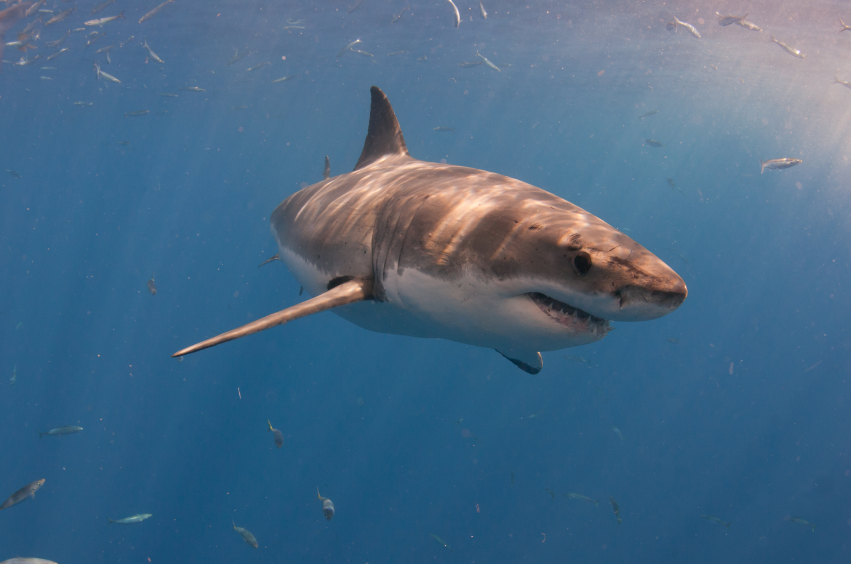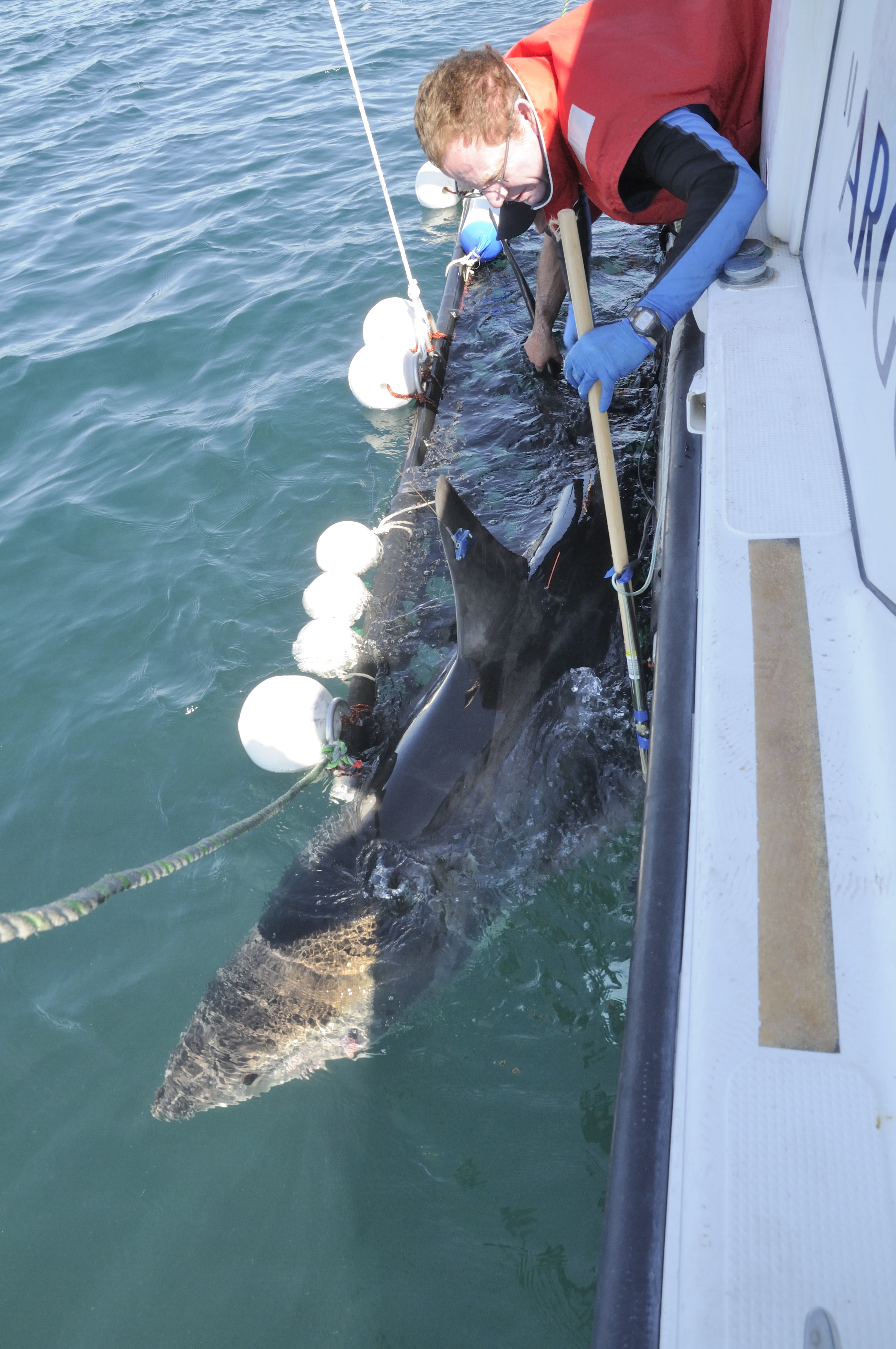
We’ve developed a unique method to measure Australia’s two white shark populations. Image: iStock
By Bryony Bennett
White sharks migrate thousands of kilometres, mostly out of sight and underwater. This elusive lifestyle – birth, sex and death – makes their populations seriously difficult to measure.
Population estimates and trends are needed to assess the effectiveness of Australia’s national white shark recovery plan, the impact of fishing, and policies such as shark control programs.
Sharks also play a vital ecosystem role as top predators. Declines in top predators can cascade through the food web, seeing some species groups increase while eliminating others.
The burning question is whether white shark numbers are going up or down.
Now, our scientists have developed a unique method to measure for the first time Australia’s two white shark populations. The method is part of a new toolkit combining tagging, aerial surveys and DNA fingerprinting and advanced statistics that will unlock the mysteries of shark sex and death.
To measure trends in white shark populations we need at least one count of shark abundance. We also need to know when they first breed, how many pups they have, how often they breed, and how many young and adult sharks die each year.

A white shark being fitted with tracking tags. Image: Justin Gilligan, NSW DPI
Measures of abundance, sex and death have never before been included in white shark population estimates, because no-one has been able to provide them. Equipped with their new toolkit, this is exactly what our scientists are now confident they can do.
A direct count of breeding adults and how often they breed is being provided through ‘close kin’ genetics.
This technique, which has been used to measure southern bluefin tuna stocks, is likely to revolutionise the way that fish (and other animal) populations are assessed worldwide, largely because it bypasses the use of imperfect data such as fishery catch records.
It uses DNA fingerprinting to find the proportion of juveniles in a population that are related.
This number can reveal the overall number of breeding adults: a smaller population will be brimming with half and full brothers and sisters, and vice versa.
When several years of data are analysed, these relationships in turn reveal how often the adults breed. For example, if a one-year old shark and a two-year old shark sampled in the same year have the same mother, that adult must have pupped in successive years.
To estimate juvenile death rates, more than 50 youngsters have been fitted with acoustic tags at the two known white shark nurseries (Port Stephens, NSW, and Corner Inlet, Victoria) and are being tracked along the east coast. Helicopter surveys have been used to count juvenile sharks near Port Stephens. The video below shows how it’s done.
With measures of the number of juveniles and their death rates, the annual births can be calculated. When combined with the number of pups born per shark this can provide another estimate of breeding females.
For Australia’s eastern white shark population, most of the detective work is done and scientists will soon get their first look at DNA fingerprints to see how close to they are to providing a population estimate.
In the west, the challenge is to find nursery areas at which the new techniques can be applied. Aerial surveys will be conducted along the South Australian and Western Australian coastline, and white sharks will be fitted with acoustic and satellite tags to locate nursery areas.
It will be months of investigation, in the air and on the water, before the various parts of the puzzle are coaxed from the sea.
***
This research is part of our Wealth from Oceans Flagship, funded by the Australian Government’s National Environmental Research Program Marine Biodiversity Hub (NERP Hub). Research in NSW on the east coast has been supported by the Hunter-Central Rivers Catchment Management Authority and the Melbourne Aquarium and has involved the NSW Department of Primary Industry, the University of Technology, Sydney and Tag-For-Life.
The tracking of white sharks uses data sourced from the Integrated Marine Observing System (IMOS) which is supported by the Australian Government through the National Collaborative Research Infrastructure Strategy and the Super Science Initiative. The expansion of the research to the west is a joint NERP Hub project with CSIRO and the Department of Fisheries Western Australia.
Media: Bryony Bennett T: +61 3 6232 5261 M: +61 438 175 268 E: bryony.bennett@csiro.au

